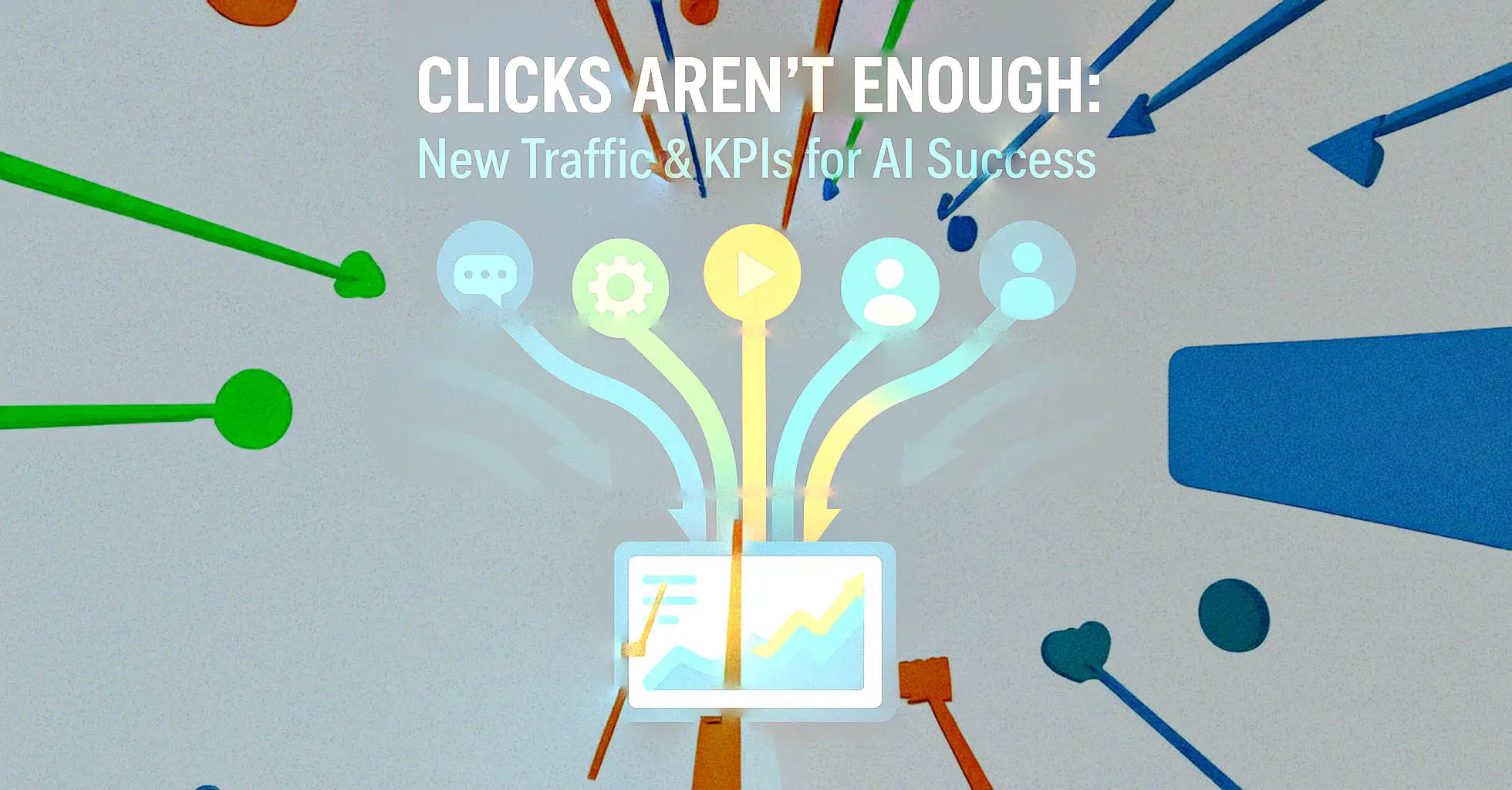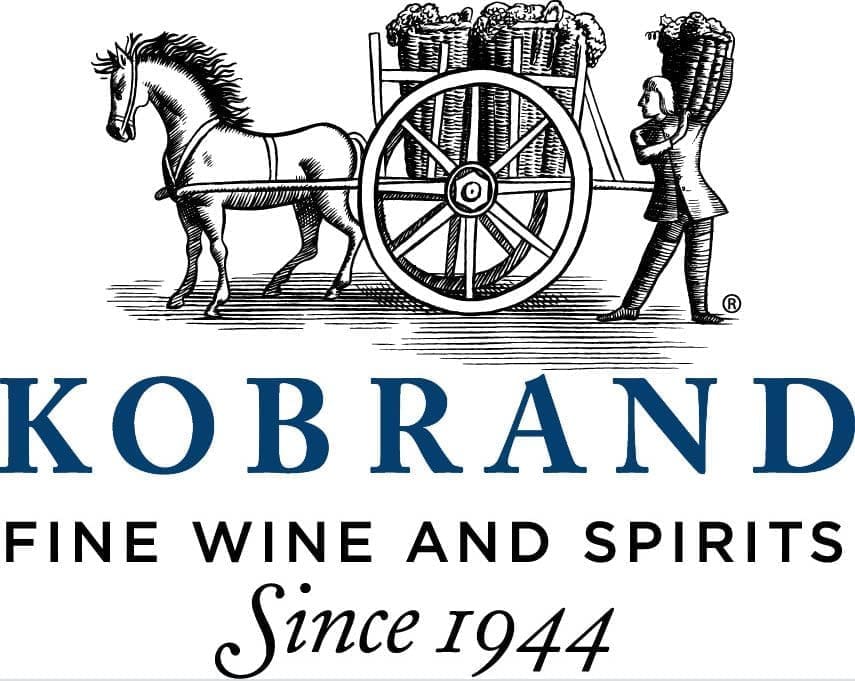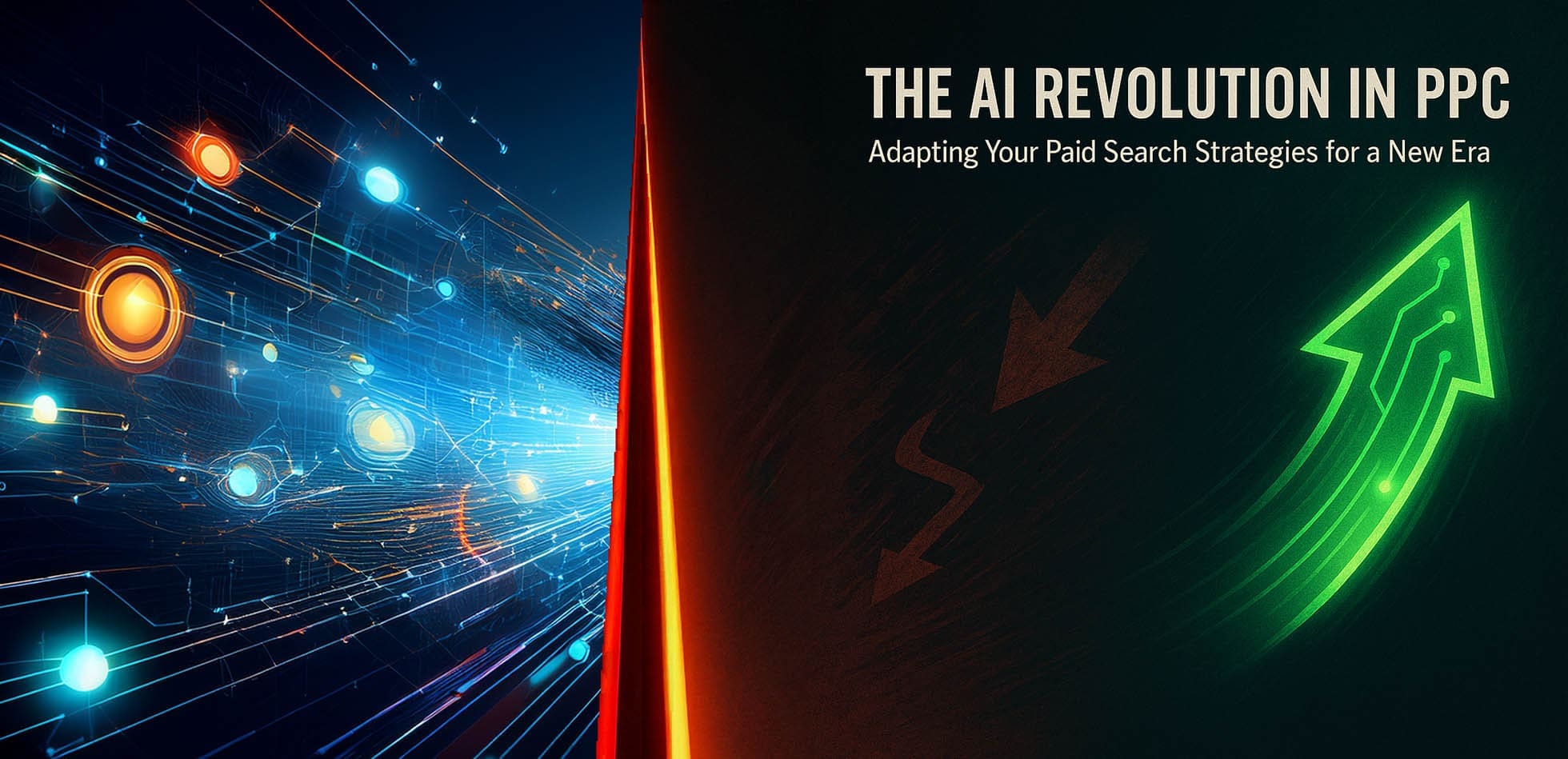Beyond Clicks & Rankings: Diversifying Traffic & Adapting to New Success Metrics in the AI Era
For years, the twin peaks of top search engine rankings and a consistently high volume of organic clicks were the undisputed holy grail of digital marketing success. While these achievements remain valuable, in the AI-suffused digital landscape, they no longer paint the complete picture of a thriving online presence or accurately reflect true business impact. The very definition of “success” is being reshaped.
The ascent of Artificial Intelligence (AI) in search, particularly through features like AI Overviews (AIOs) that provide direct answers on the Search Engine Results Page (SERP), coupled with AI’s increasing sophistication in understanding user intent across a multitude of platforms, is the primary catalyst for this change. User behaviors are evolving in response. This means businesses must now look “beyond clicks and rankings” to build resilient, diversified traffic strategies and adopt a more holistic, outcome-driven approach to measuring marketing effectiveness. Is your marketing strategy still tethered to yesterday’s primary metrics, potentially overlooking the broader impact you are making and the new opportunities emerging? Or are you prepared for a future where digital value is measured more comprehensively, and valuable traffic arrives from a multitude of intelligently cultivated sources? This guide examines the imperative of traffic diversification and the new success metrics that truly matter in the AI era.
The Evolving SERP & Its Ripple Effect on Traditional Metrics
The most immediate and visible way AI compels us to rethink our metrics is through its transformation of the SERP itself. As we have explored in discussions about mastering AI Overviews, these features are designed to answer many user queries, especially informational ones, directly on the SERP. This efficiency for users often translates to a reduced need for them to click through to individual websites for that initial layer of information. Consequently, even if your content is a source for an AIO, your direct organic click-through rate for that query might decline.
This rise of “zero-click searches” is also expanding beyond purely informational queries. Initially most prominent for straightforward questions, AI’s capabilities to synthesize and present information directly are growing. We are seeing AI become more adept at summarizing comparisons, product features, step-by-step processes, and even local business information directly on the SERP. This means the potential for interactions where the user’s need is met without leaving the search results page is growing across a wider range of query types, including those with commercial intent. Furthermore, AI is fundamentally altering how users gather information versus when they are ready to take a more committed action, like making a purchase. The initial research phases of the customer journey might be increasingly served by AI-generated summaries. This implies that when users do click through to your site from a SERP featuring an AIO, their intent may be more specific, more qualified, and further down the conversion funnel, changing the value and nature of each click and making a relevant landing page experience even more critical.
Pillar 1: The Imperative of Traffic Diversification – Building a Resilient Digital Presence
In this dynamic AI era, relying predominantly on a single traffic source, especially organic search from one dominant engine, is an increasingly risky and outdated strategy. True digital resilience and sustainable growth come from cultivating a diversified portfolio of traffic sources. Over-reliance on organic search alone is a gamble due to algorithm volatility and AI-driven shifts that can cause significant fluctuations in traffic. Certain types of content are more susceptible to diminished click-through rates from AI Overviews, and competition for remaining clicks can intensify. Relying on any single third-party platform also carries inherent platform risk.
The goal is not to abandon SEO, but to strategically integrate it into a broader, more robust traffic acquisition strategy by cultivating alternative and complementary channels.
Direct Traffic: This is when users arrive by typing your URL directly, using bookmarks, or searching your brand name. Strong direct traffic signals brand recognition and loyalty, qualities AI systems and businesses value, and it is often the most profitable. Cultivate it through memorable branding, exceptional user experience, reinforcing your web presence in offline marketing, and building a positive brand reputation.
Referral Traffic: Visitors arriving from links on other websites drive targeted, engaged traffic and act as strong E-E-A-T signals. Cultivate this through strategic guest posting on reputable sites, digital PR campaigns, building genuine relationships with industry peers, creating highly linkable assets like original research or unique tools, and authentic participation in relevant online communities.
Email Marketing: This owned channel is less susceptible to algorithmic changes and is effective for nurturing leads, driving repeat business, and building deeper customer relationships. AI tools can enhance email marketing through hyper-personalization, predictive optimization, and sophisticated segmentation.
Social Media (Organic & Paid): Crucial for building communities, fostering engagement, targeted advertising, and driving referral traffic. Content shared on social platforms can also be ingested by AI, contributing to brand perception. Select platforms where your audience spends time, publish value-driven content, engage actively, and strategically use paid social advertising.
Paid Search (PPC): As detailed in our discussions on AI’s revolution in PPC, this remains a powerful tool for capturing high-intent users and providing immediate visibility, complementing organic efforts, especially in an AIO-populated SERP environment.
Community Platforms (Reddit, Quora, Niche Forums, Discord): Authentic and helpful participation can drive highly targeted, engaged traffic and build reputation. Authoritative contributions on these often-indexed platforms can influence AI’s perception of your brand’s expertise.
Offline to Online Integration: Bridge physical and digital marketing using QR codes in physical materials, promoting your website at events, and leveraging traditional media to drive online visits and branded search traffic.
The ultimate aim is to build a robust, diversified traffic acquisition strategy where multiple channels work together synergistically. Each channel should contribute to overall business goals, reinforce brand messaging, and create resilience against unforeseen shifts in any individual channel.
Pillar 2: Redefining Success – New Metrics for an AI-Driven Landscape
As the user journey and the SERP evolve under AI’s influence, so too must our definition of marketing success. Relying solely on traditional vanity metrics like raw organic traffic volume or top-position rankings can be dangerously misleading. High rankings or traffic might not translate to tangible business outcomes if AI Overviews satisfy user intent on the SERP, or if traffic is low quality. A click is just a click; its value is contextual. The focus must shift towards metrics that more directly reflect actual business impact and true audience engagement.
Several Key Performance Indicators (KPIs) matter more now:
Visibility & Influence in AI Generative Experiences: Track mentions and citations in AIOs. Analyze the sentiment (positive, neutral, negative) when your brand is referenced. Measure your share of voice within AIOs for key queries compared to competitors.
Brand Salience, Recall & Authority: Monitor growth in branded search volume and direct traffic increases. Periodically conduct brand perception surveys to measure shifts in awareness and perceived expertise, contributing to what we have previously discussed as dominating your niche.
Engagement Quality & Depth: Move beyond basic bounce rates. Measure attentive time on page/site, scroll depth for key content, and meaningful interactions like lead magnet downloads, video completions, demo requests, or clicks on key internal CTAs. Assess the content consumption rate for longer-form pieces.
Lead Quality & Conversion Value: Prioritize Marketing Qualified Leads (MQLs) and Sales Qualified Leads (SQLs) over raw volume. Analyze Customer Lifetime Value (CLV) from different channels. For paid efforts, focus on Return on Ad Spend (ROAS) and overall marketing ROI against clear business objectives.
Share of Conversation & Overall Sentiment Analysis: Monitor brand mentions and industry discussions across social media, forums, review sites, and news articles using AI-powered listening tools to understand broader reputation and competitive positioning.
First-Party Data Growth & Engagement: Track the growth of email lists, app users, and loyalty program members. Monitor engagement with these owned channels (open rates, CTRs from emails, active participation in owned communities). This first-party data is invaluable.
Furthermore, the inadequacy of last-click attribution in today’s multi-touchpoint, AI-mediated customer journeys cannot be overstated. Embracing more sophisticated multi-touch attribution models (like data-driven, time decay, or linear models) is paramount to gain a realistic view of how different channels contribute to conversions, a concept also relevant to understanding PPC’s role in an AI world.
Pillar 3: Content Valuation in the Age of AI – Every Piece Must Earn Its Place
The necessary shift in measuring success also demands a more strategic approach to content creation and valuation. As some experts note, we need a significant shift where sheer visibility does not automatically equate to tangible business value. Every piece of content must demonstrably earn its place.
Conduct regular strategic content audits, applying new, AI-era lenses. Ask yourself:
Does this piece have the structure, factual density, and clarity to inform AI Overviews or be optimized for Retrieval-Augmented Generation?
Does it significantly contribute to our established topical authority in a core area, fitting logically within a topic cluster, as discussed in strategies for building unshakeable topical authority?
Even if it doesn’t attract massive traffic, does it drive deep engagement with a valuable audience segment or generate high-quality leads?
Can this core piece be effectively repurposed or promoted across diverse channels to maximize its reach?
When planning new content, move beyond search volume as the sole driver. Consider the potential business value of the audience, their likely intent, and the content’s likelihood to contribute to conversions and broader brand goals. Use website analytics, CRM data, and PPC insights to identify themes and formats that align best with these evolved success metrics. This might mean creating fewer, but significantly higher-impact, pieces of content, focusing your valuable resources on what truly delivers measurable value.
Practical Steps to Transition Your Strategy & Measurement Framework
Adapting to this new landscape requires deliberate action and a shift in mindset. It’s crucial to educate stakeholders, both internal teams and external clients, on why traditional metrics are becoming less complete indicators and articulate the strategic importance of traffic diversification and new KPIs. Invest in modern analytics and business intelligence tools that can track user behavior across diverse channels, integrate first-party data, support multi-touch attribution, and ideally offer insights into AIO visibility and brand sentiment.
Develop a proactive multi-channel content distribution plan; do not just publish and hope for organic traffic. Promote your best content across email, social media, relevant communities, and PR channels, potentially with targeted paid amplification. Foster cross-team collaboration, as silos hinder effective multi-channel marketing. SEO, content, PPC, social, email, and PR teams need to work in an integrated fashion. Finally, embrace experimentation, iteration, and continuous learning. The AI landscape will continue to evolve rapidly, so cultivate a culture of curiosity and agile adaptation.
The Future of Traffic Acquisition & Success Measurement
Looking ahead, several interconnected trends will likely continue to shape our approaches. The primacy of owned audiences and first-party data will become even more critical, providing stable engagement and invaluable data for personalization in a privacy-centric world. AI-driven predictive analytics will offer more sophisticated forecasting for channel performance and strategic decision-making. The industry will continue to move towards more nuanced measures of genuine user attention and true engagement. Simultaneously, the heightened focus on privacy-centric measurement and ethical data use will demand robust capabilities in these areas. The ongoing challenge, and opportunity, will be accurately attributing value in an AI-mediated ecosystem.
Navigating the New Digital Compass with Diversified Strategies & Evolved Metrics
The definition of digital marketing success is undergoing a profound transformation in the age of Artificial Intelligence. While top search rankings and high organic click volumes will not disappear entirely, they are no longer the sole arbiters of achievement. Adapting your traffic acquisition strategies to embrace robust diversification, and evolving how you measure performance to reflect true business impact, are now fundamental to long-term viability. Resilience comes from building a balanced portfolio of traffic sources, understanding how AI influences user journeys, and focusing on metrics that genuinely indicate deep customer engagement, strong brand equity, and valuable business outcomes. By courageously moving “beyond clicks and rankings,” businesses can navigate the future with a clearer compass, making more informed strategic decisions and building a more sustainable and impactful digital presence.
Clients Who Trusted Us
We establish strong business relationships with our clients and have a vested interest in their success. We pride ourselves in being that trusted partner who our clients can rely on and have the confidence their best interests are being served. Here are just some of the many client partners who have trusted us.












































